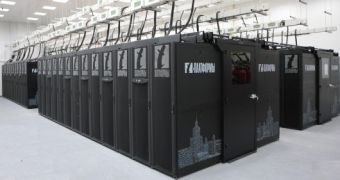Russia recently expressed its commitments to get into the race for building an exascale supercomputer by 2020, thus joining an ever-growing list of countries with similar aspirations including China, Japan, and the United States.
Russian experts have already drafted plans for the development for such a system, which is estimated to cost around 45 billion rubles (nearly $1,5 billion US or 1,1 billion Euro by the current exchange rates).
The document authors have presented their plans at a recent meeting of Russia`s National HPC Technology Platform, and this is being updated right now with suggestions from the Ministry of Telecom and Mass Communication who wants to add GRID networks to the concept.
According to Cnews, the document has been in work for over half a year now and its authors have said that it details the stage-by-stage construction of an exascale machine as well as the development of a special processor for exascale computing, HPC platforms and applied software.
The first step in the development of the exascale supercomputer is the deployment of a system with performance of up to 10-15 Pflops in 2014-2015, while in 2017-2018, Russia it's expected to introduce a 100 Pflops system.
In March of this year, Russian officials have announced that its first petaflop capable supercomputer came into operation at the Rosatom Nuclear Energy State Corporation in Sarov.
According to the Russian scientists who have developed this machine, the supercomputer has a sustained performance of 780 teraflops, making it the 12th-fastest system in the world in an unofficial Supercomputer TOP500 list.
The organization however chose not to participate in this top due to the system's high secrecy level.
Besides detailing plans for the development of this new exascale supercomputer, the documents drafted by the Russian scientists also proposes certain project contractors, including Rosatom and T-Platforms, which would take care of the hardware design of this machine.

 14 DAY TRIAL //
14 DAY TRIAL //